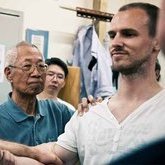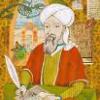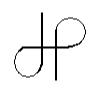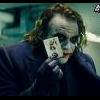-
Content count
3,356 -
Joined
-
Last visited
-
Days Won
12
-
I like your approach. Here is the full piece, entitled Drawing Water and Chopping Wood, that I wrote in response to your earlier question on another thread--maybe it's a little clearer. I don't know about you, but a lot of anatomy passes through my mind as "one-pointedness" shifts. I finished a book, that has enough of that to be worth a look, IMHO. Free to download here, or you can get a paperback to hold in the hand here.
-
Miraculous power and marvelous activity Drawing water and chopping wood. (“The Recorded Sayings of Layman P’ang: A Ninth-Century Zen Classic”, Ruth Fuller Sasaki, Yoshitaka Iriya, Dana R. Fraser, p 46) There’s a similar saying in “The Gospel According to Thomas”, a gnostic gospel: Cleave a (piece of) wood, I am there; lift up the stone and you will find Me there. (“The Gospel According to Thomas”, log 77; coptic text established and translated by A. Guillaumont, H.-CH. Puech, G. Quispel, W. Till and Yassah ‘Abd Al Masih, p 43) Sometimes people hold their breath in cleaving wood, or in lifting a heavy bucket or stone. Moshe Feldenkrais observed that some people hold their breath when getting up out of a chair, and he put forward a way to avoid that: …When the center of gravity has really moved forward over the feet a reflex movement will originate in the old nervous system and straighten the legs; this automatic movement will not be felt as an effort at all. (“Awareness Through Movement”, Moshe Feldenkrais, p 78) Feldenkrais stipulated that: … there must be no muscular effort deriving from voluntary control, regardless of whether this effort is known and deliberate or concealed from the consciousness by habit. (ibid, p 76) The paired sayings highlight moments when the weight of the body combines with a singular location of consciousness to cause “reflex movement” in the action of the body. “Reflex movement” can also be engaged to sit upright, as the weight of the body combines with a singular location of consciousness. In Gautama’s teaching, a singularity in the location of consciousness follows “making self-surrender the object of thought”: … the (noble) disciple, making self-surrender the object of (their) thought, lays hold of concentration, lays hold of one-pointedness. (SN 48.10, tr. Pali Text Society vol V p 174; “noble” substituted for Ariyan) In my experience: …“one-pointedness” occurs when the movement of breath necessitates the placement of attention at a singular location in the body, and a person “lays hold of one-pointedness” when they remain awake as the singular location shifts. (Just to Sit) (Drawing Water and Chopping Wood) There's more, in Drawing Water and Chopping Wood--Paul Jung can stop holding his breath.
-
Let me just confuse you more: As to this… right view comes first. And how… does right view come first? If one comprehends that wrong purpose is wrong purpose and comprehends that right purpose is right purpose, that is… right view. And what… is wrong purpose? Purpose for sense-pleasures, purpose for ill-will, purpose for harming. This… is wrong purpose. And what… is right purpose? Now I… say that right purpose is twofold. There is… the right purpose that has cankers, is on the side of merit, and ripens unto cleaving (to new birth). There is… the right purpose which is [noble], cankerless, supermundane, a factor of the Way. And what… is the purpose which is on the side of merit, and ripens unto cleaving? Purpose for renunciation, purpose for non-ill-will, purpose for non-harming. This… is right purpose that… ripens unto cleaving. And what… is the right purpose that is [noble], cankerless, supermundane, a component of the Way? Whatever… is reasoning, initial thought, purpose, an activity of speech through the complete focussing and application of the mind in one who, by developing the [noble] Way, is of [noble] thought, of cankerless thought, and is conversant with the [noble] Way–this… is right purpose that is [noble], cankerless, supermundane, a component of the Way. (MN 117, tr. Pali Text Society vol III pp 113-121) In other words, you can't get there from here. "Why?" is difficult to explain. I think of it as engaging my whole being, instead of pushing myself around from the left hemisphere. And how does one engage one's whole being? Herein… the (noble) disciple, making self-surrender the object of (their) thought, lays hold of concentration, lays hold of one-pointedness. In layman's terms: …“one-pointedness” occurs when the movement of breath necessitates the placement of attention at a singular location in the body, and a person “lays hold of one-pointedness” when they remain awake as the singular location shifts. (Just to Sit) Holding any bent-knee posture for a period of time will yield a movement of breath that necessitates the placement of attention at a singular location. Hello, Jesus! Find the seat and put on the robe, and afterward see for yourself. ("Zen Letters, Teachings of Yuanwu", tr. Cleary and Cleary, p 65) Alternative method for finding Jesus: Cleave a (piece of) wood, I am there; lift up the stone and you will find Me there. (“The Gospel According to Thomas”, log 77; coptic text established and translated by A. Guillaumont, H.-CH. Puech, G. Quispel, W. Till and Yassah ‘Abd Al Masih, p 43) More on that in Drawing Water and Chopping Wood. Lots of nice quotes about freedom, too! What if God was one of usJust a slob like one of usJust a stranger on the busTryin' to make His way home? (One of Us, Joan Osbourne) The gift IMHO is the animal ability to return reason to the fire, but humans have a hard time acknowledging that they are animals. Nevertheless, I have hope: As a master of Zen archery, Kobun was asked to teach a course at the Esalen Institute in Big Sur, California. The target was set up on a beautiful grassy area on the edge of a cliff overlooking the Pacific Ocean. Kobun took his bow, notched the arrow, took careful aim, and shot. The arrow sailed high over the target, went past the railing, beyond the cliff, only to plunge into the ocean far below. Kobun looked happily at the shocked students and shouted, "Bull's eye!!" (Anecdotes by Joan Halifax Roshi, https://terebess.hu/zen/mesterek/otokawa.html)
-
Christmas dinner's near all good wishes, a grand day and now, gentle tunes
-
someone else's shoes are on my feet; they look good, I think I'll keep them
-
Happy longest night!
-
The question inspired me, and I wrote a post in response--I can post the whole thing here, but it's a bit long for that (not that my posts aren't long anyway): Drawing Water and Chopping Wood Hopefully a better answer. I didn't address the fact that the Zen saying emphasizes enlightenment, but the enlightenment referred to is not enlightenment as Gautama described it--I take that up in One Way or Another.
-
I recognize these dance steps! I see these people, and I dance with them every weekend, at the local native American casino.
-
where is this place, please...
-
-
juice, lips, tongue, sweet now and not a kiss to be had anywhere--but then anywhere--but then everywhere--come, get your share when we all shine on
-
Where am I!?
-
Love Cleary's translation at the bottom of your primer: Carrying vitality and consciousness, embracing them as one, can you keep them from parting? "Carrying vitality" implies a sense of weight--here's something from a piece I'm writing now, slightly edited: Moshe Feldenkrais observed that people sometimes hold their breath just to get up out of a chair, and he outlined a way to avoid that: …When the center of gravity has really moved forward over the feet a reflex movement will originate in the old nervous system and straighten the legs; this automatic movement will not be felt as an effort at all. (“Awareness Through Movement”, © 1972, 1977 Moshe Feldenkrais, p 78) Feldenkrais stipulated that: … there must be no muscular effort deriving from voluntary control, regardless of whether this effort is known and deliberate or concealed from the consciousness by habit. (ibid, p 76) “Reflex movement” can also be engaged to sit or stand, as the weight of the body combines with a singular location of consciousness. In Gautama’s teaching, a singularity in the location of consciousness follows “making self-surrender the object of thought”: … the (noble) disciple, making self-surrender the object of (their) thought, lays hold of concentration, lays hold of one-pointedness. (SN 48.10, tr. Pali Text Society vol V p 174; “noble” substituted for Ariyan) In my experience: …“one-pointedness” occurs when the movement of breath necessitates the placement of attention at a singular location in the body, and a person “lays hold of one-pointedness” when they remain awake as the singular location shifts. (Just to Sit) As to "... embracing them as one, can you keep them from parting?": As Gautama said, there can also come a moment when: … seated, (one) suffuses (one’s) body with purity by the pureness of (one’s) mind so that there is not one particle of the body that is not pervaded with purity by the pureness of (one’s) mind. (AN 5.28, tr. PTS vol. III pp 18-19, parentheticals paraphrase original) The “pureness of mind” that Gautama referred to is the pureness of the mind without any will or intention to act in the body. There is a feeling of freedom, when the body is suffused with “purity by the pureness of (one’s) mind” and the activity of inhalation and exhalation is “reflex movement” regardless of where consciousness takes place. The experience can be recalled in standing and in daily life through an overview of the body taken at the close of the seated experience, the "survey-sign" of the concentration. There are some details of anatomy and of fascial support for the vertebrae of the sacrum and spine that might interest you, here: A Natural Mindfulness (hardcopy through Amazon).
-
Cold morning, train horn blow, whistle freight train--take me far on down the track





.thumb.jpg.0279361507cce6eb60b037b7a68d8dc9.jpg)












